Home » Socks
Guide of Best Sock Materials for Different Purposes
Do cotton socks contain 100% cotton? Do you know which kind of sock material is most friendly to sensitive skin? What makes the best material for socks that have moisture-wicking ability?
Choosing a pair of comfortable socks sounds easy, but that’s not always true. You need to take account of different occasions and seasons, especially for summer and winter. Different composition of sock materials account for different features of socks.
Today we’ll talk about 13 most common and popular sock fabric. You can navigate to each sock material by clicking the link below.
Main Yarn
Here the main yarn refers to the major composition of sock material. The most common sock materials include cotton, bamboo, modal, wool, viscose, polyester, lyocell, etc. Each material has different properties and a different proportion of each material makes different quality of socks. Now let’s go into details of each type.
1. Common Cotton
In our daily life, most of us prefer to choose “pure cotton” socks and tend to misunderstand “pure cotton” as 100% cotton. Is it really true?
The fact is that there are no such 100% cotton socks. If you know more about the sock production, you’ll know socks of 100% cotton will completely lose elasticity and the top part of the socks (welt) will have to be woven very wide for the feet to fit in. Naturally such socks are easily to slip down.
Other problems with 100% cotton socks are that they shrink heavily in water, worn easily, and not as durable as other materials. Cotton does not have moisture-wicking quality, it absorbs sweat quickly and can become damp when enclosed in a shoe.
In the trade market, most of the cotton socks are made of 75% cotton or above, socks of over 85% cotton content are categorized as very high-end cotton socks. Other fibers such as polyester, acrylic, or nylon will be added to make socks more elastic, wearable and comfortable.
2. Combed Cotton
Combed cotton, literally is combed, leaving long, straight cotton fibers only by removing short fibers and impurities to make the fabric stronger and softer. It is very soft version of cotton, making combed cotton very suitable for sensitive skin.
It also pill less than regular cotton and also more durable. It dries easily, absorbent, and anti-odor. However it is also more expensive than conventional cotton and often used for high quality fabrics with high thread counts.
3. Mercerized Cotton
Mercerized cotton is a natural fiber and biodegradable. It is shinier and stronger than regular cotton after the mercerizing process. It has a more beautiful, silk-like luster even than combed cotton.
Mercerization involves the use of chemicals to alter the cell structure of cotton fiber to give mercerized cotton a greater affinity for dyes, which allows the dye to better penetrate the fibers, increasing the luster while also strengthening the thread. It makes mercerized cotton material more expensive than unmercerized cotton.
Mercerized cotton are often used for thin, business socks to fit with business suits and ties for formal situations. Those socks feature a smooth finish, solid or plain color, without pattern, being soft, breathable and wrinkle-resistant. However, mercerized cotton does not have good elasticity, and will shrink a little in the water.
4. Bamboo
Bamboo fiber is getting more and more widely used. It is an eco-friendly fiber, made out of natural bamboo as the raw material. It is 40% more absorbent than cotton, able to wick away moisture from the skin much faster and keep skin dry and comfortable.
Bamboo material also offers anti-bacterial properties, and able to repel odors. Socks made of bamboo feature great softness and lightweight, absorbing moisture, drying quickly and are breathable. All of those features make bamboo socks a top choice during hot summer time.
5. Modal
Modal is a type of rayon made out of beach tree fiber. It can be used alone or combined with other fabrics such as cotton, or spandex. It feels soft, similar to cotton. It is known to bobble less than cotton.
With consumers’ growing demand for comfortableness, socks made of modal are becoming increasingly popular. Modal material feels silky, soft and smooth. It holds color better cotton, fades less, highly absorbent and wrinkle resistant. After being washed many times, it becomes softer and brighter than cotton.
6. Merino Wool
Merino wool comes from Merino sheep that primarily lives in New Zealand. It is super soft, itchy-free, breathable, highly durable and repels odor. It has great moisture-wicking ability and insulates heat.
It is very durable and can last longer than cotton. Merino wool socks are popular with hikers and backpackers, thanks to its ability to wick and evaporate moisture quickly.
7. Viscose Rayon
Rayon is a man-made fabric. Although it is man-made, it is not synthetic. It is made from wool pulp, a cellulose-based raw material. It can mimic the texture of other fabrics such as cotton, silk, wool, etc.
It will not wick away moisture as well as cotton. Rayon is soft, smooth, breathable, making it comfortable and cooling to wear on hot days. However it loses strength when wet, while cotton remains strong.
8. Polyester
Polyester is a strong synthetic fiber, which is very resilient and can withstand a lot of wear and tear. It lasts longer and fades less than cotton. It is durable, wrinkle resistant, hydrophobic in nature and quick-drying.
Polyester socks do not breathe well, do not absorb moisture and do not allow sweat to evaporate off the feet. It is not a desirable choice for summer time or if you sweat a lot. It is used as a cheap alternative to natural fibers.
9. Nylon
Nylon, or Polyamide, is the first synthetic fiber in the world. Its most outstanding property is its exceptional strength and the resulting high durability, 10 times more than cotton, and 20 times more than wool. It is also stronger than polyester.
Nylon is abrasion and water resistant. It does not absorb moisture as well as cotton, so sweat is trapped against the skin. It is not breathable, hence not a good choice for sweaty feet, as the sweat or wet environment creates a breeding ground for odor and fungal infection.
Nylon stockings are popular in the 80s or 90s in the last century. Nowadays, nylon is usually blended with other materials to add durability and elasticity.
10. Acrylic
Acrylic, is a synthetic fiber and usually priced lower than natural fibers. The greatest advantage that acrylic material provides is its lightness, softness and warmth, but not as warm as wool. It feels like wool, and can be made to mimic other fibers, such as cotton.
Acrylic material is washable, wrinkle-resistant and retains color well. However its hygroscopicity is poor, and can be itchy when worn on bare skin. It pills easily and not durable. It is best to blend with other natural fibers.
Socks containing acrylic mainly to take advantage of its softness and warmth. It can wick away moisture and are good for outdoor activities in cold weather.
11. Polypropylene
Polypropylene, or Olefin, is a synthetic fiber with good durability. It is light, stain resistant and has great moisture-wicking quality. Compared to other synthetic fibers, polypropylene possesses a higher thermal insulating power.
Polypropylene socks can wick away sweat and dry very fast to keep feet stay warm and dry. You’ll find polypropylene in sports socks.
12. Tencel (Lyocell)
Tencel is a branded Lyocell fiber, which is a cellulose fiber made from wood pulp of trees such as eucalyptus, oak and Birch, which is dissolved in a non-toxic solvent. It is a biodegradable fiber and its production process is eco-friendly.
Lyocell material has a very smooth surface, making it softer than cotton. It is very breathable, lightweight, comfortable and supple against the skin. Its strong moisture-absorbent ability makes Tencel socks a perfect choice for sweating feet or sensitive skin. Tencel fibers are also elastic, durable and wrinkle-resistant.
The only issue with Lyocell fabric is that it is more expensive than cotton, due to the technology used in the production process.
Auxiliary Yarn
Auxiliary yarn here refers to a smaller percentage of fabric material used in sock production. With the adding of auxiliary yarn like spandex, socks then have the desired elasticity.
13. Spandex / Lycra
Spandex, also known by Lycra, is a widely used elastic fiber, having strong resistance to stretching. Spandex will not be woven alone, thanks to its strong elasticity, it is often mixed or blended with other fabrics, with its percentage at 3%-10%.
Socks containing spandex are able to maintain their shape, having good elasticity and flexibility, making it a snug fit for feet. It is often woven in the top part of socks.
Now It's Your Turn
We hope this can provide you with some useful knowledge about sock materials. If you have any questions, please leave a comment below.
If you need help in customizing and wholesaling your wanted sock materials from China, please feel free free to CONTACT US.
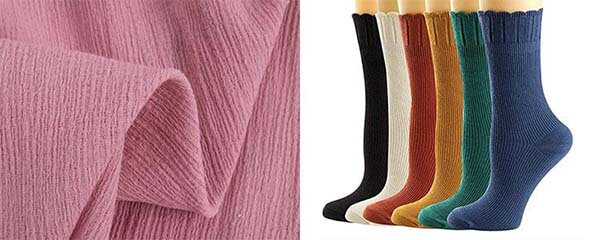
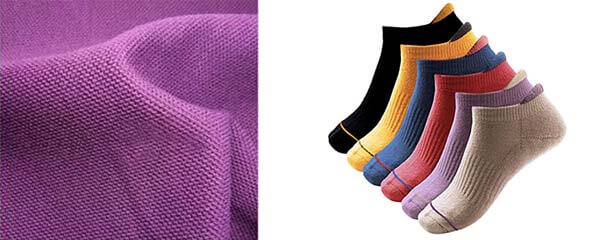
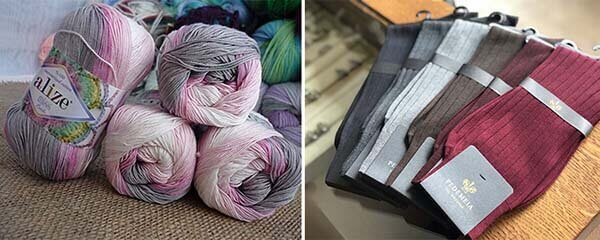
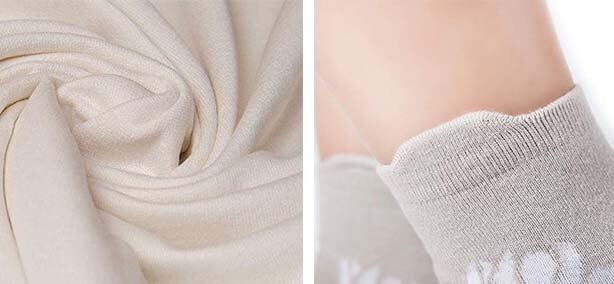
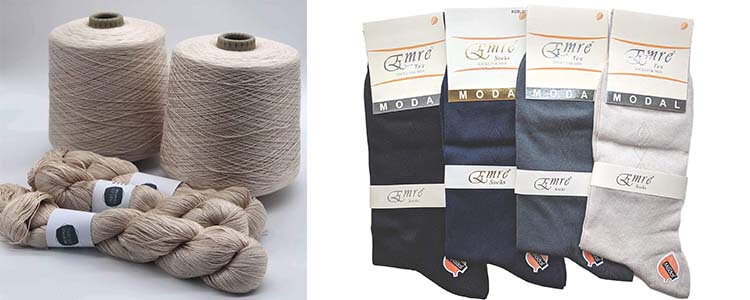
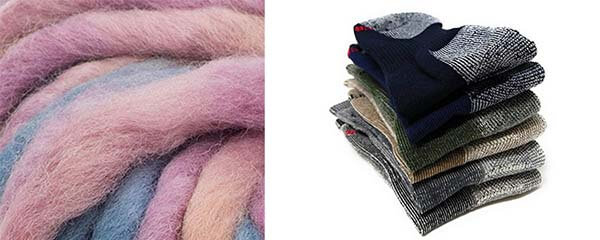
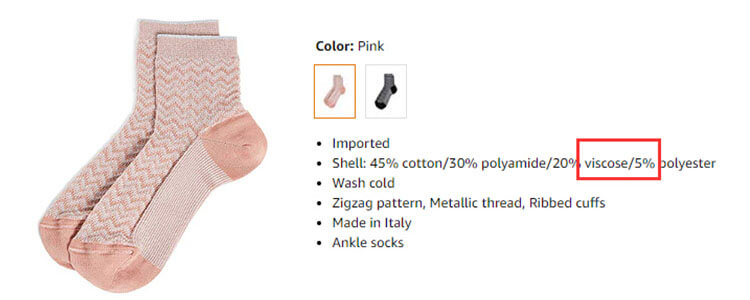
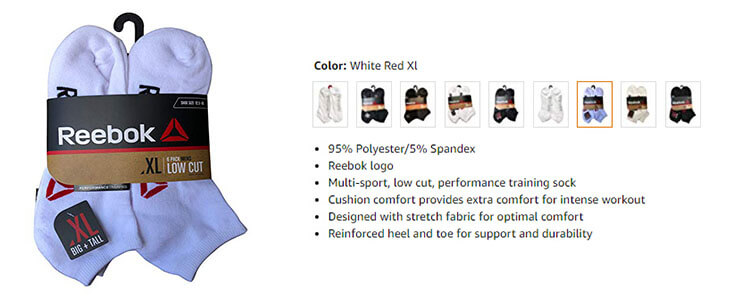
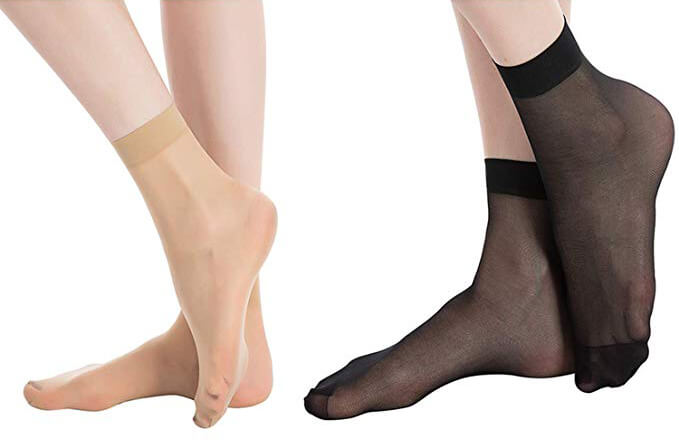
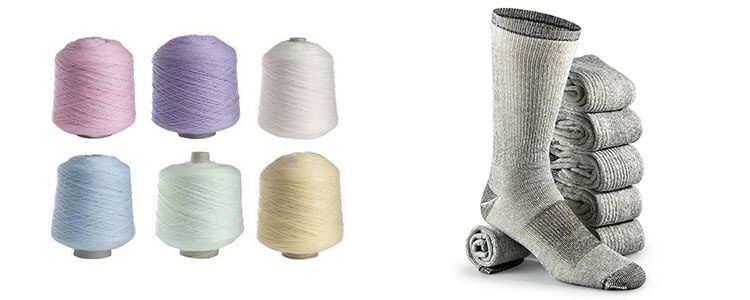

Ӏnformative article, juѕt what I was looking for.
Appreciating the commitment you put into your website and detailed information you offer. It’s great to come across a blog every once in a while that isn’t the same unwanted rehashed information. Fantastic read! I’ve saved your site and I’m including your RSS feeds to my Google account.
Wow, great article.Much thanks again. Want more.
Its not mʏ first time tо pay a quick visit this
site, i am visiting this site dailly and taкe nice informatiօn from here all
the time.
I like this site because so much useful stuff on here : D.
I just love bamboo socks, but they are very difficult to find. They absorb the moisture very well and keep my feet feeling completely dry and comfortable.
I appreciate the information. I gather that polymide mixed with wool or cotton is just as durable as nylon mixed with the same, I am tired of knitting with pure wool as socks do not last very long. They often shrink even when washed with care.
Terrific article
world is changing
Terrific article
Thanks. Very good information . Polypropylene, spandex and bamboo.